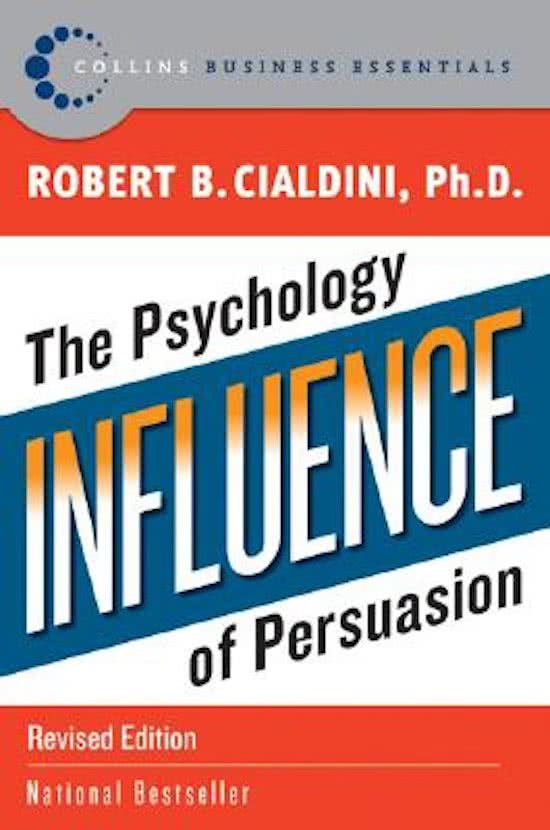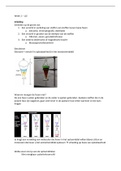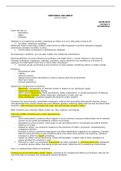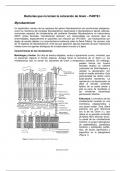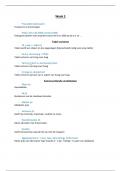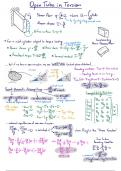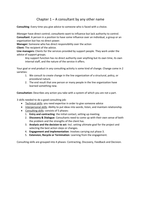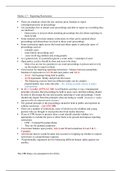Summary Pearson New International Edition – Influence, Science and Practice
Chapter 1 - Weapons of Influence
Fixed action patterns can involve complicated sequences of behaviour. A fundamental characteristic
of these patterns is that the behaviours comprising them occur in virtually the same fashion and in
the same order every tame. Click and the appropriate tape is activated; whirr and out rolls the
standard sequence of behaviours. The way the tapes are activated is interesting. It is not a trigger
that is required, but rather a trigger feature. Often the trigger feature is just one tiny aspect of the
totality. Although the preprogramed tapes that our integrated in our system usually work to our
advantage, the trigger features that activate them can dupe us into playing the tapes at the wrong
times. For example, a well-known principle of human behaviour says that when we ask someone to
do us a favour we will be more successful if we provide a reason. Research shows that you will be
more likely to have success if you ask ‘Hey, can I use the copying machine before you because I am in
a rush?’ than if you ask ‘Hey, can I use the copying machine before you?’. Surprisingly, you will also
be more likely to have success if you ask ‘Hey, can I use the copying machine before you because I
have to make some copies?’. This means the word ‘because’ is a trigger, no matter what the actual
reason is. Human behaviour, like animal behaviour, works most of the time in a mechanical, tape-
activated way.
To deal with the complex and rapidly moving world we live in, we need shortcuts. We can’t recognize
and analyse all the aspects in each person, event, and situation we encounter in. We very often use
our stereotypes to classify things according to a few key features and then to respond without
thinking. Sometimes mistakes are made, because not even the best stereotypes and trigger features
work every time, but we will accept their imperfections because there is really no other choice.
The mental shortcuts we use are called judgemental heuristics, that allow us to think simplified but
leave us open to occasional, costly mistakes. For example, there’s the shortcut rule that goes, ‘If an
expert said so, it must be true’. We easily accept the statements and direction of individuals who
appear to be the authorities on the topic, which may be a bit of a unsettling thought.
Automatic or click, whirr responding – responding mechanically to one piece of information
Controlled responding – reacting on the basis of a thorough analysis of all the information
People are more likely to deal with information in a controlled fashion when they have the desire
and ability to analyse it carefully; otherwise, they are likely to use the easier click, whirr approach.
People are also likely to use the easier approach when the issue is very complicated, time is tight,
distractions are intrusive, emotional arousals are strong or the mental fatigue is deep. These
conditions mean we are in no cognitive condition to operate mindfully, so important topic or not, we
have to take the shortcut.
There are some people who know very well where the weapons of automatic influence lie and who
employ them regularly and expertly to get what they want. The secret of their effectiveness lies in
the way that they structure their requests, the way that they arm themselves with one or another of
the weapons of influence that exists in the social environment.
The profiteers of the weapons of automatic influence use them wile exerting little personal force
against their targets, which gives them the ability to manipulate without the appearance of
manipulation. The contract principle in human perception affects the way we see the difference
between two things that are presented one after another. If the second item is fairly different from

